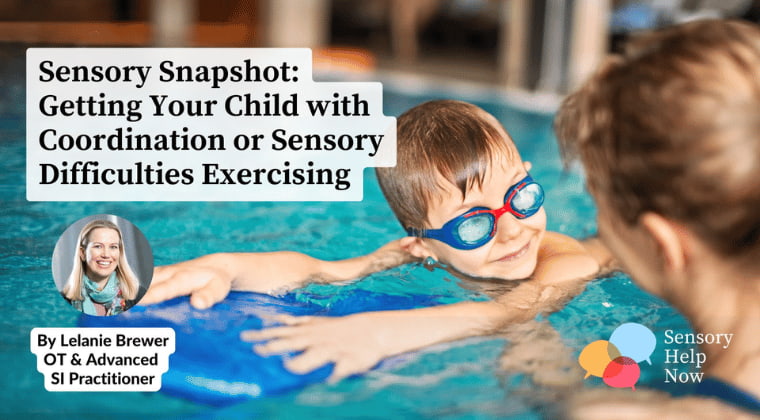Sensory Snapshot: Getting Your Child with Coordination or Sensory Difficulties Exercising
9 January 2024

It's a new year and many adverts talk about the importance of being active and exercising. While moving and exercising are great for vestibular and proprioceptive input, it can be challenging to start a physical activity if you have coordination or sensory processing difficulties.
Physical activity or exercise is important for children for a variety of reasons. These include developing healthy bones, muscles and joints and a healthy heart and lungs. Exercising is also vital to developing coordination, strength, and muscle control as well as maintaining a healthy body weight. Research has also shown that regular exercise is beneficial for improving children's mental well-being and their sleep. It's also recommended that children aged 5-18 years should participate in at least 60 minutes of physical activity a day.
Many physical activities and sports lessons for children take place in groups, which can be difficult for children with coordination and sensory processing difficulties. For example, children with coordination and motor planning problems might be embarrassed and reluctant to participate in group activities, especially if it's a team sport where they never get picked. For children who are over-responsive to sensory input, especially loud noises, groups might also be too much for them to handle. However, with the right support and guidance, children with motor planning and sensory processing challenges can be encouraged to find a physical activity that they enjoy participating in, which will help them with a healthy lifestyle long-term.
The first step to encouraging your child to be active is focusing on fun and participation instead of achievement. Where possible, it is recommended to avoid competitive sports against other children and to focus instead on activities where they can monitor their own improvement. This could be participating in a parkrun with supportive family and friends instead of a cross country club at school where your child might be self-conscious.
Also, consider activities that don't require much hand-eye coordination. These are easier activities to start with for children with coordination and motor planning difficulties. Yoga, swimming, running, martial arts and climbing are good activities to consider. It is also important to break down your child's chosen activity into smaller parts. For example, encourage them to practice their individual skills in an un-pressurised environment before joining in with a group and get them to think about what they are doing: do they need to kick a ball harder or not quite so hard?
If a child or young person is interested in a sport, even if they can't play it well, it is still worth encouraging their interest. They might become an expert on players and teams and increase their general knowledge, which can help them when discussing activities with their peers.
Finally, help your child find something they can do and encourage their improvement and participation. At the end of the day, healthy habits start with something that you love.
Best wishes
Lelanie
PS Hand-eye coordination refers to our hands’ and eyes' ability to work simultaneously. While hand-eye coordination is something only some of us may be skilled in, it can be practised. In our ‘5 Games and Activities to Improve Hand-Eye Coordination’ blog, we highlight some games and activities to help improve hand-eye coordination.
Sensory Snapshot is a regular series by Advanced SI Practitioner and OT Lelanie Brewer. Lelanie gained her MSc in OT at Brunel University, London, and is pursuing a PhD with Newcastle University. Experienced in the NHS, charity and private sectors, as well as being a UK university senior lecturer, Lelanie is the Lead for Continuous Professional Development at Sensory Integration Education.
